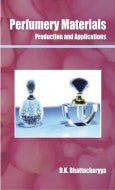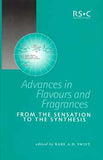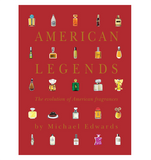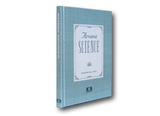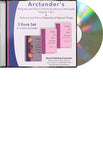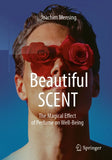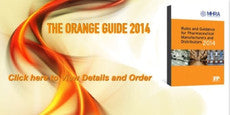Perfumery Materials: Production And Applications By Bhattacharya D.K.
Perfumery Materials: Production & Applications
Author: D.K. Bhattacharyya
Pages: 286
Year: 2009
About The Book:
The book comprises five chapters and covers almost all aspects of perfumery materials. Various kinds of essential (aromatic) oil-bearing materials and process technologies including recent processes for extraction of essential oils and methods of upgradation of essentials oils by appropriate rectification and fractionation have been described. Structure-odor relationships and syntheses of wide variety of perfumery chemicals adapting chemical and biotechnology routes have been extensively covered. Perfumery & non perfumery applications of both natural and synthetic perfumery materials are also included. Considering the importance and requirements in commerce and industries, a chapter on standardization and evaluation of essential oils has been included. It covers routine physical and chemical tests, analysis by chromatographic techniques like TLC and GLC, GC-MS, and by other spectroscopic techniques for characterization and detection of adulterations in essential oils. The book as a whole provides a good compilation of most relevant aspects in the perfumery field.
Book Contents:
Introduction,
CHAPTER 1 : Natural Perfumery Materials: Sources, Characteristics, Extraction, and Uses of Natural Perfumes (Essential/Aromatic Oils):
Flowers, Grass, Leaves, Bark, Seed, Herb, and Rhizome, Wood, Fruits, Tropical Fruits, Gums, Animal: References,
CHAPTER 2 : Natural Perfumery Materials: Production Technology,
Introduction, Steam Distillation, Expression, Enfleurage, Maceration, Solvents, Liquid Carbondioxide, Enzymatic, Microwave, Adsorption, Combined Process, Post extraction Treatment of Recovered Essential Oils, Fractionation of Essential Oils, Concentrated, Terpeneless, and Sesquiterpeneless, Essential Oils, References,
CHAPTER 3 :Synthetic Perfumery Materials: Production and Applications: Introduction, Correlation Between Odor Characteristics, and Chemical Constitution, Terpene Alcohols and their Esters, Synthetic Geraniol, Biotechnological Method for Geraniol, Geraniol Esters, Geranyl Acetate, Other Esters of Geraniol, Perfumery Uses of Geraniol and Geraniol Esters, Citronellol and its Esters, Synthetic Citronellol Chemical Route, Biotechnological Route of Citrinellol Synthesis, Chemical Synthesis of Citronellol Esters, Biotechnological Route of Citronellol Esters, Perfumery Uses of Citronellol and its Esters, -Terpineol, Chemical Synthesis, Biotechnological synthesis, Perfumery Uses of Terpineol, Terpinyl Acetate, Other Terpinyl Esters, Biotechnological Route of Synthesis of -Terpineol Esters, Linalool and its Esters, Linalyl Acetate, Esters of Linalool, Uses, Nerol Esters and Uses, Menthol and its Esters, Odoriferous Non-Terpene Alcohols, Perfumery Uses of n-Alcohols, Unsaturated Non-Terpene Alcohol, Odoriferous Non-Terpene Aldehydes, Perfumery Uses of the Aldehydes, Linear Ketones, Linear Lactones, Aldehydes, Ketones, and Lactones (Five or Six Membered Rings), -n-Amyl Cinnamaldehyde, Vanillin, Vanillin by Biotechnological Process, Heliotropin, Hydroxy Citronellal, Terpene Ketone, Ionones, Methyl Ionones, Five and Six-Membered Ketones, Jasmone, Benzyl Acetone, Acetophenone, Terpene Aldehydes, Citral, Citronellal, Perfumery Materials from Benzene, Toluene, Napthalene, Phenol, m-Cresol, Styrene, Styrene Oxide, Perfumery Materials from Cyclopentanone and Dicyclopentadiene, Synthesis of Isoborneol, Borneol, and Camphor, from Pinene, Perfumery Chemicals from Pinene, Bioflavors, Large Ring Ketones and Lactones, Civetone, Muscone, Exaltone, Large Ring Lactones, Exaltolide, Artificial Musks, Polycyclic and Macrocyclic Musks, Macrocyclic Musks, Essential Oil Analogues, Artificial Floral and Fruity Perfumery, Perfumery Materials for Multipurpose Applications: References,
CHAPTER 4 : Applications of Perfumery Materials:
Introduction, Imitation Perfumes, Blending of Perfumes, Base, Blending Agent, Modifier, Fixative, Jasmine Floral Perfume, Rose, Tuberose, Essential Oils in Aromatherapy, Essential Oils in Antimicrobial Agents, Bactericidal Applications, As Insect Repellant, In Agriculture, Composition of Fruit Flavors, Pineapple Beverage, Pineapple Jelly Crystals, Perfumery Products in Toilet Soaps and Cosmetics, Cosmetics/Toiletries, Incense and Fumigants Products, Miscellaneous Applications, References,
CHAPTER 5 : Standardisation and Evaluation:
Introduction, Standards of Essential Oils (BIS), Standards of Essential Oils (IP), Standards of Essential Oils (BP), Analysis of Essential Oils, Physical Analysis, Chemical Analysis, Analysis by Chromatography, Thin Layer Chromatography, Column Chromatography, Gas Liquid Chromatography, GC MS in Perfume, GLC Analysis (Polar and Non Polar Phase), Capillary GC Analysis, Spectroscopic Analysis, Adulteration of Essential Oils, Adulteration with Cheaper Essential Oils, Adulteration with Synthetic Addition, Methodologies for Detection of Adulterants, Physical Methods, Chemical Methods, Detection of Adulteration by Chromatography

